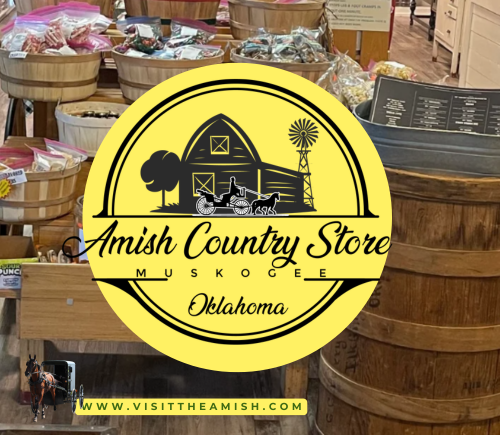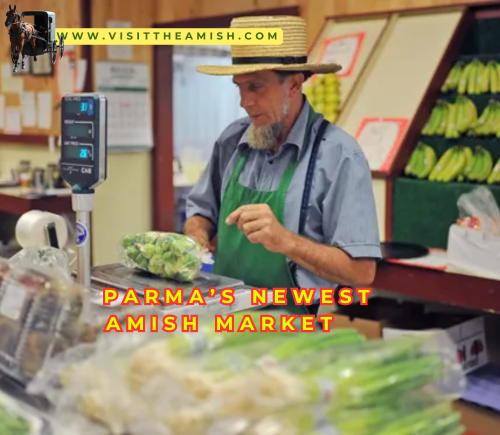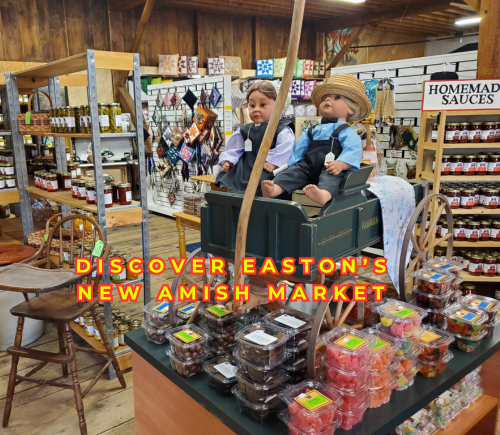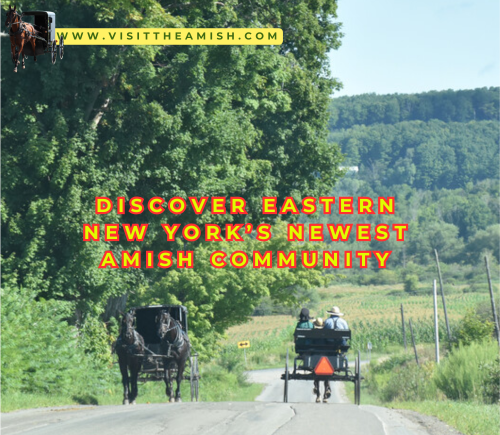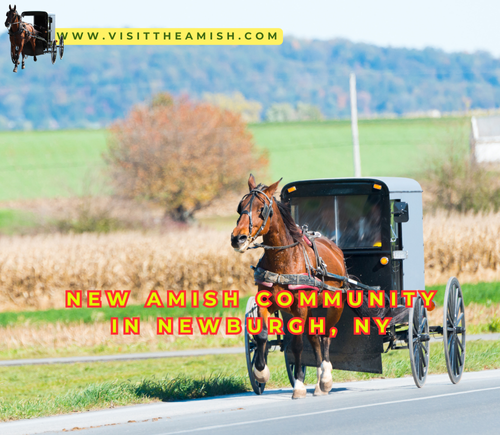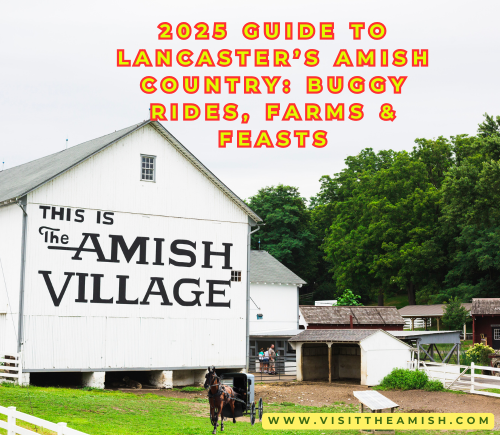Amish Country Store & Restaurant in Muskogee, OK: A Culinary Gem in Southern Oklahoma
By [Your Name]
Nestled in the heart of Muskogee, Oklahoma, the Amish Country Store & Restaurant is a delightful destination for locals and visitors alike. Offering hearty, home-cooked meals and a wide variety of Amish-made goods, this unique establishment combines traditional flavors with an inviting atmosphere. Whether you’re stopping by for breakfast or browsing the store’s selection of jams, baked goods, and handcrafted items, the Amish Country Store & Restaurant has something for everyone.
The Story Behind Amish Country Store & Restaurant
Located at 2410 N 32nd St, Muskogee, OK 74401, the Amish Country Store & Restaurant has become a beloved spot for those seeking authentic Amish-style cooking and products. Its website, amishcountrystoreok.com, provides detailed information about its offerings and hours of operation.
The restaurant prides itself on using old-fashioned Amish recipes to create comforting meals that feel like home. Jacob Miller, one of the store managers, shared: “We wanted to bring a piece of Amish tradition to Oklahoma. The recipes we use have been passed down through generations, and everything is made fresh daily.”
A Menu Full of Comfort Food

The menu at Amish Country Store & Restaurant is packed with delicious options that showcase classic Amish flavors. Here are some highlights:
Appetizers
- Corn Nuggets ($4.99): Crispy bites of sweet corn.
- Cheese Curds ($5.99): Available in regular or spicy varieties.
- Fried Okra ($4.99): A Southern favorite with a crispy coating.
Soups & Salads
- Chicken & Dumplings ($7.49): A customer favorite featuring tender dumplings in creamy broth.
- Beef & Potato Stew ($7.49): Hearty and seasonal with beef, potatoes, carrots, and peas.
- Yoder’s Salad ($10.99): Grilled or fried chicken served over greens with strawberries, blueberries, pecans, and parmesan cheese.
Sandwiches & Burgers
- Amish Burger ($9.99): Angus beef patty served on toasted Amish bread with lettuce, tomato, pickles, and onion.
- BBQ Beef Sandwich ($9.99): Tender beef covered in homemade BBQ sauce on toasted bread.
- Chicken Salad Sandwich ($8.99): Shredded chicken mixed with grapes, pecans, celery, and special sauce.
Main Courses
- Meatloaf Dinner ($9.99): Served with mashed potatoes and gravy alongside green beans.
- Turkey & Dressing ($10.99): A classic comfort dish with cranberry sauce on the side.
Desserts
- Shoofly Pie ($4.99 per slice): Sweet molasses-based pie that’s an Amish favorite.
- Fried Pies ($3.99 each): Available in flavors like apple and peach.
- Homemade Fudge ($5 per half-pound): Choose from over a dozen varieties.

A Shopping Experience Like No Other
Beyond its restaurant offerings, the Amish Country Store is a treasure trove of handmade goods and specialty items sourced from nearby Amish communities in Oklahoma and beyond. Visitors can browse shelves stocked with jams, jellies, canned goods, noodles, breads, candies, and cheeses—including the popular Carolina Reaper cheese for spice lovers.
The store also features a sugar-free section for those with dietary restrictions and a bakery filled with fresh pastries and fried pies.
Voices from Locals & Visitors
Locals have embraced the Amish Country Store & Restaurant as a staple in Muskogee’s dining scene. Mary Johnson shared her thoughts: “Their meatloaf is incredible—it tastes just like my grandmother used to make! And don’t get me started on their fried pies—they’re the best I’ve ever had.”
Tourists visiting Muskogee are equally impressed by the authenticity of the experience. Mark Carter from Tulsa remarked: “I’ve been to other Amish-style restaurants before, but this one stands out because of its warm atmosphere and amazing food.”
Challenges Faced by Owners
While the restaurant has been overwhelmingly successful since its opening, it has faced some challenges adapting to modern business practices while maintaining its traditional values:
- Technology-Free Operations: The store operates without credit card machines or online ordering options; payments are cash-only to preserve simplicity.
- Supply Chain Logistics: Transporting specialty items from rural Amish communities requires careful planning to ensure freshness.
Despite these hurdles, Jacob Miller remains optimistic about their future in Muskogee.
Seasonal Events & Upcoming Plans
The restaurant plans to host seasonal events such as customer appreciation weekends (July 15–17) and holiday-themed menus featuring dishes like turkey stuffing casserole and pumpkin pie later this year.
Jacob Miller shared his hopes for expansion: “We’re working on adding cooking classes where people can learn how to make dishes like shoofly pie or chicken pot pie—it’s about sharing our traditions with others.”
Why Visit Amish Country Store & Restaurant?
The Amish Country Store & Restaurant offers more than just food—it provides an opportunity to connect with Amish culture through its recipes and handcrafted products. Whether you’re enjoying chicken and dumplings or browsing jars of homemade jam in the store’s aisles, each visit feels like stepping into a simpler time.
As Mayor Marlon Coleman noted: “This restaurant is a wonderful addition to our city—it celebrates tradition while adding something unique for residents and visitors alike.”

Citations:
[1] https://www.amishcountrystoreok.com
[2] https://legacy-admin.spillover.com/spillover/proto/amishcountrystore/menu/menu.htm
[3] https://www.tripadvisor.com/Restaurant_Review-g51535-d2425081-Reviews-Amish_Country_Store-Muskogee_Oklahoma.html
[4] https://www.travelok.com/listings/view.profile/id.19390
[5] https://www.youtube.com/watch?v=NkJ6Me9gsZo
[6] https://www.travelok.com/listings/view.profile/id.19390/directions
[7] https://www.mapquest.com/us/oklahoma/amish-country-store-restaurant-291737438
[8] https://www.amishcountrystoreok.com/food
[9] https://www.greencountryok.com/listing/amish-country-store-&-restaurant/549/
[10] https://legacy-admin.spillover.com/spillover/proto/amishcountrystore/
[11] https://www.doordash.com/store/amish-country-store-muskogee-2850917/
[12] https://www.doordash.com/store/amish-country-store-2850917/
[13] https://www.yelp.com/biz/amish-country-store-and-restaurant-muskogee?start=5
[14] https://www.cattco.gov/sites/default/files/downloads/Roger-Brooks/CattaraugusLoRes.pdf
[15] https://www.grubhub.com/restaurant/amish-country-store–restaurant-2410-n-32nd-st-muskogee/7570696
[16] https://www.yelp.com/biz/amish-country-store-and-restaurant-muskogee
[17] https://wanderlog.com/list/geoCategory/556444/best-family-restaurants-in-muskogee
[18] https://www.doordash.com/food-delivery/muskogee-ok-restaurants/
[19] https://www.tripadvisor.co.nz/ShowUserReviews-g51535-d2425081-r194255327-Amish_Country_Store-Muskogee_Oklahoma.html

